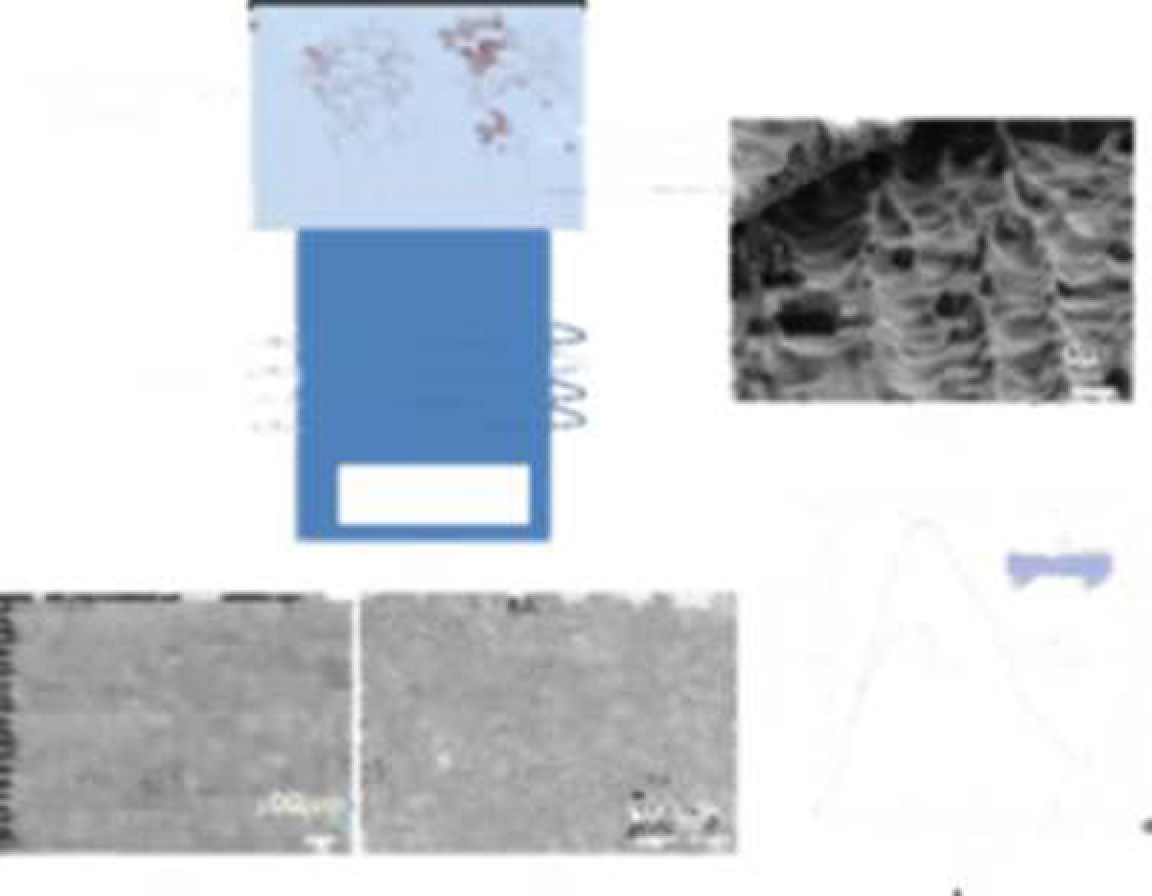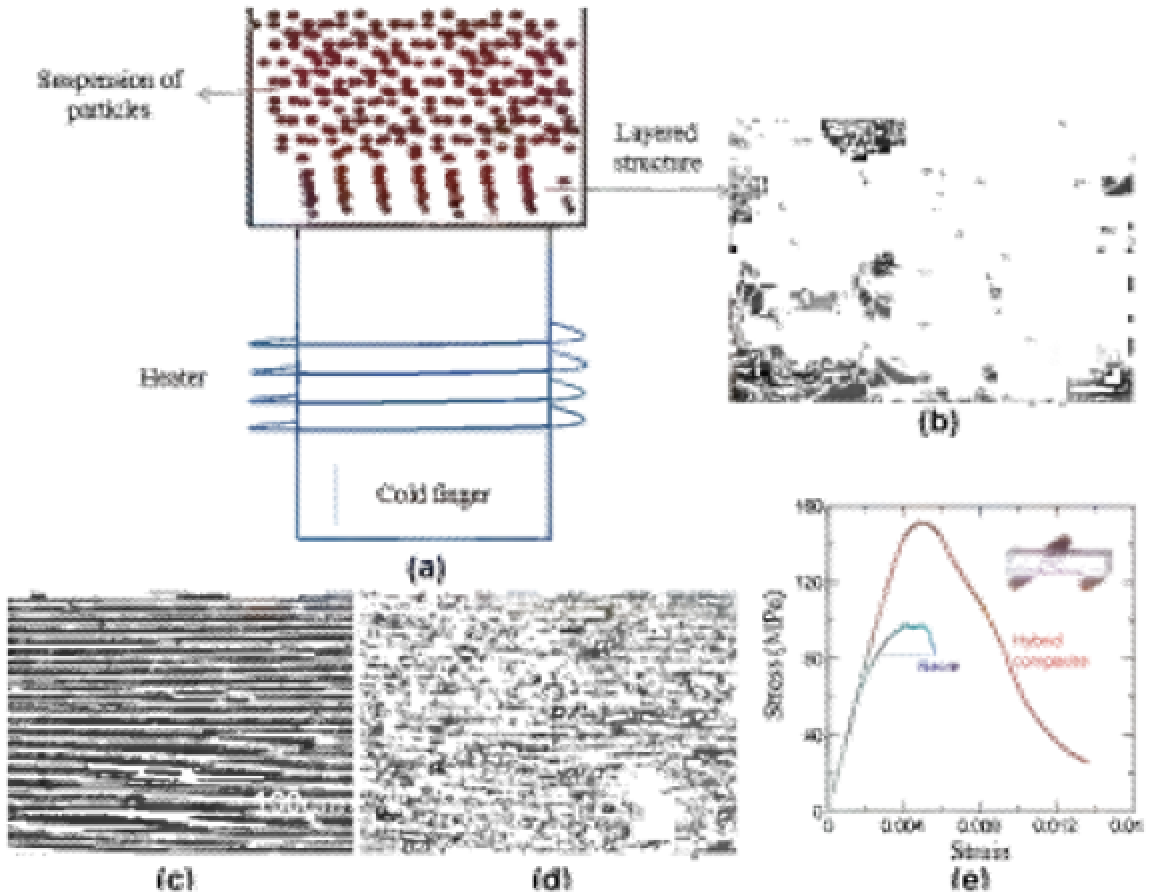Biomedical Engineering Reference
In-Depth Information
FIGURE 3.9
Freeze casting method to develop artificial nacres. (a) Schematic of the set-up, (b) aluminum oxide layers
after the ice layers are sublimated, (c) layered composite made of alumina layers (the lighter phase) filled with PMMA (the
darker phase), (d) the segmented layered structure resulted from compressing the layered composite, and (e) flexural stress-
strain behavior of the composite compared to that of nacre. Adapted from Ref.
54
.
3.4.2 Layer
-
by
-
Layer Assembly
Layer-by-layer (LBL) assembly is based on
sequential deposition of nanometers-thick lay-
ers of substances from oppositely charged com-
pounds
[56]
. The substances can be PEs, carbon
nanotubes, charged nanoparticles, biological
macromolecules, etc.
[56-62]
.
A substrate is coated with a sacrificial layer
and then is sequentially dipped into solutions of
oppositely charged substances with intermedi-
ate rinsing steps (
Figure 3.10
a). In each dipping
step, a layer of substances that have opposite
charge to the substrate is coated on the surface
by electrostatic interactions. For the case of arti-
ficial nacre, these substances can be nanoclays
and different polymers. After the layers are
coated, the sacrificial layer is dissolved so that a
stable freestanding film is developed. This film
is stabilized by ionic and hydrogen bonds, which


